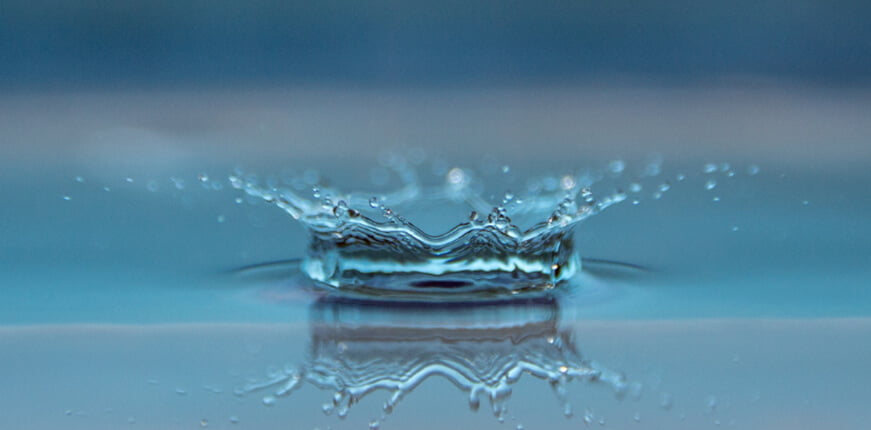
Most flash drives are designed to be incredibly small and portable. While this is great for the most part, it means they can often be very easy to misplace – which may lead to an inadvertent loop around the washing machine or a dip in the bath.
That said, most flash drives are robust enough to survive this, as they are well-sealed and don’t contain a battery. However, there are a few things you need to do to ensure the drive and data within remain intact for future use.
In this article, we’ll be walking you through how to protect your Branded USB Stick if it gets wet and how to recover any data in the worst-case scenario.
How to Dry a Water-Damaged USB Stick

If your flash drive is water damaged, there are a few steps you need to take straight away to ensure you’re protecting the drive and its contents.
In most cases, although it’s likely you’ve decreased the life span of your drive, the device should still be able to perform read and write cycles and therefore the data you have stored will still be on the drive.
However, immediately after taking your USB out of the water, do not:
- Connect to your PC or other USB devices – by doing this you begin the read-and-write cycle when the device is still wet, which may corrupt the data stored and even damage the USB port itself.
- Use heaters or hair dryers – by drying the USB with a high heat source, you run the risk of erasing the data.
- Leave the USB outdoors – the same applies to leaving your wet drive outside, it will be fine for a finite period, but excess heat from exposure to the sun may begin to aggravate the internal components, especially so if they’re still wet.
- Move the USB around too much – if you move the USB too vigorously you run the risk of further spreading the water internally, increasing any potential damage.
If you’ve dropped your USB into salt water, it’s actually a good idea to rinse the drive with fresh water before drying it. Leaving behind any of the salt water residue, risks doing serious harm to the internal functions of the USB due to the highly corrosive properties of the salt.
Step 1 – Remove the USB from the Water: Carefully remove your USB from the water, and place it down on a flat surface.
Step 2 – Dry the Surface: Take some kitchen roll, a dry towel or a clean soft rag, and carefully clear water on the surface of the device. In order to avoid turning the USB over and spreading any water internally, you can place the device in the towel and wrap it carefully over the top to dry both sides and leave in place for a few minutes.
Step 3 – Remove the Cap: If your USB has a cap, remove this to expose the connector. In some cases, we’d also recommend removing the outer shell, however, this is only an option if you’re comfortable putting everything back together once dry.
Step 4 – Dry the Internal Components: There are several different ways to do this, you can use the classic rice trick and submerge the device flat into a sealable container of dry rice, which will soak up some moisture.
If you suspect the damage is significant, then you can even place the device into a sealable bag with silica gel pouches, which can be purchased at stores like Screwfix and B&Q.
Of course, please note that depending on the damage, these methods may not be effective, and in which case we’d recommend just leaving the drive in a low-humidity area for a few days to dry through before testing it again.
By doing this you prevent moisture from spreading through the device while giving it a chance to dry out thoroughly.
These are the most important steps you need to take to try to fix any physical damage to the drive itself, but what about the all important data stored inside?
How to Retrieve Data from a Water-Damaged USB Stick

Of course, there will be times when the damage on the internal mechanisms are beyond repair, and your data has been permanently lost and the USB no longer functional – in this case there’s unfortunately not much you’ll be able to do.
However, if you plug in the now dry USB and the computer or device isn’t recognising it, then it’s a good idea to contact a professional computer services/repair company to find out whether it’s possible to retrieve the data.
If you can see your device appearing on your computer, and your data remains, then you can continue to use the USB normally. If you can’t see your data on the USB, the next option is to look at some quality recovery software to try and salvage your data.
Here’s how to recover your data:
Step 1: Download your chosen program: Follow the instructions to download and install the software onto your chosen device.
Step 2: Connect the USB: Once the program has been downloaded, connect the USB to your computer.
Step 3: Launch the Software: Although the interface may vary depending on the software you’ve chosen, you’ll be able to select your chosen USB and begin a data recovery scan.
Step 4: Complete the Scan: Once the scan completes, you should be able to review a list of the recoverable files available.
Step 5: Select and Move the Files: Select the files you want to recover and the software should begin to recover the files. Once this has been completed, simply move the files to a location on your desktop rather than the USB itself.
Bear in mind though, that even if the software manages to detect the files that you’d like to recover, it may not always be possible for it to do so.
Takeaways
Managing your water-damaged flash drive is never an easy process, and although we’ve outlined how to dry the USB correctly, there’s no guarantee that you’ll be able to retrieve your data even with the help of data recovery software.
However, in most cases if you handle your device with care and dry it correctly, you should be able to use your USB and gain access to any data you have stored on the device.
If you’d like more USB advice, or you’d like to learn more about our extensive product ranges, why not get in touch with us today?



